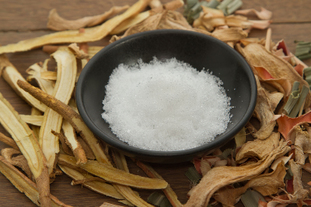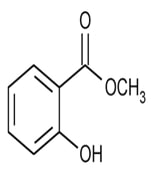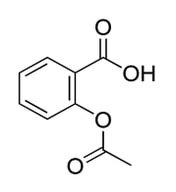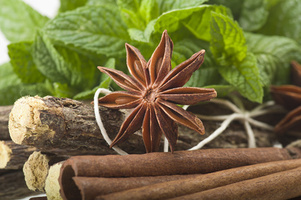Taleju Oil®
Taleju Oil
Beginning December 31,2014 I went on a hard journey spending 4 nights in Kathmandu, 4 nights in Hanoi, 1 night in Ho Chi Minh, and 3 whole days flying alone. Along the way, I began having a cough. Starting from the second day in Kathmandu, it was gradually getting worse. Other than the cough, all was normal. I did not have a fever, no sputum, no pain of joints, no diarrhea, good appetite, just a little tired due to traveling. However, when I returned home from Ho Chi Minh City, my cough became quite serious. When I spoke even one word, my cough continued and it became so bad that I could not speak well. I went to the nearby General Hospital and I took a CT scan, but no abnormalities were found. During the journey, I must have gotten infected with bacteria or viruses. I also probably inhaled mold (fungus) when I cleaned the whole house at the end of the year prior to my travels. Antifungal and antitussive drugs were prescribed for the symptoms. I took them for 10 days but they didn’t alleviate my cough at all. Even sputum was not produced and the cough continued. I went to the hospital again and was re-examined but the cause was still unknown. However, according to the lung disease specialist, 40-50% of coughs are unexplained.



As an alternative remedy; I remembered an oil from Nepal and began taking it. This oil is a folk remedy of Nepal and is a blend of seven Essential oils. My clinic and laboratory employ five Nepalese young people. They are studying Japanese and working with us. They bring a blend of essential oils from Nepal to prevent diseases while they are staying in Japan, because the climate of Japan is very different – rather cold – for them, and they may easily get cold. When they feel sick, they drink a few drops of the oil or inhale evaporated steam of the oil. It seems effective for many diseases. The oil is a blend of different natural essential oils obtained from different herbal plants of Himalayan region of Nepal. It is thought to be efficient against several medical conditions like cold, cough, stuffy nose, fatigue, muscular ache, headache, neuralgia, arthritis, sprain, etc.
I checked the ingredients and understood well why the oil exerts excellent effects. Because the oil is wonderful mixture of the three great classic medicines of Asia — Ayurvedic medicine, Chinese medicine, and Tibetan medicine — and with the folk remedies of Nepal. Considering the geography of Nepal, this magical mixture can be easily understood. Nepal is surrounded by India, Tibet and China. The crossing point or melting pot of three ancient cultures. Because in Nepal three million bottles of the oil are sold annually through 25 distributors, the oil should be very safe to say the least and is not harmful to our body.
I added 2-3 drops to a half cup of water and stirred well; I drank it after lunch and supper. Surprisingly, the next day I could produce sputum!! However, the cynical view might explain that the production of sputum could be thanks to the slow action of the antifungul drug — it took 10 days for the drug to exert the efficacy. But intuitively, I felt the drugs didn’t have any positive effect on my cough. For a week I added 2-3 drops of the oil to water after lunch and supper, and my cough improved 60 %, but not 100 %. Since I had a respiratory problem, I inhaled the oil by nebulizer (inhaler)deep into my lung. After two weeks, 100% healing was finally achieved. No cough at all and now luster was added to my voice. *I used handy type inhaler of Panasonic. http://panasonic.jp/inhaler/ew_ka30/recommend/
In Nepal nebulizers are not popular. Instead they dilute the oil by water and drink it, or put a few drops into hot water and inhale the evaporated steam, or apply it on the temples when they have a headache, or apply it on the muscles when they have a sprain or shoulder stiffness. Very few people in Nepal have sent the oil deep into the lung by nebulizer. Tuberculosis can be cured by this oil if it is sent deep into the lungs. Tuberculosis is still a serious illness not only in developing countries, but even in some developed countries. Recently Tuberculosis has secretly begun to be widespread. But by this simple oil, tuberculosis can be cured!!
Today, the emergence of a multi-drug resistant tuberculosis has become the biggest problem. Isoniazid and rifampicin are used in standard therapy of tuberculosis. But Mycobacterium tuberculosis with these resistance has emerged. If you are infected with this type of tuberculosis, the cure rate drops to 50%, and surgical therapy is performed. In addition, extensively-drug-resistant Mycobacterium tuberculosis that is stronger than multi-drug resistant tuberculosis has evolved. For this type of tuberculosis, chemotherapy is almost impossible and the cure rate is 30% at most.
When this happens, the development of anti-tuberculosis drugs against emergence of resistant bacteria becomes a cat-and-mouse game, and new drugs can not catch up. Therefore, we need a radical change in perspective. Maybe this oil can be the breakthrough. According to WHO statistics in 2012, tuberculosis morbidity in Nepal is 163 people to 100,000 people. This rate is 30 times more than that of Japan
(5/100,000). For the same year, 381/100,000 in Myanmar. Nominal GDP per capital of Nepal is $686 (US dollars), and that of Myanmar is
$ 1,103. To better understand; the standard of living in Myanmar is almost double, but the incidence of tuberculosis in Nepal is less than twice that of Myanmar.

To further explain the comparison, in South Korea tuberculosis morbidity is 100 people to 100,000 people and nominal GDP is $ 24,453 per person. In other words, even though the standard of living in Nepal is quarter of South Korea, tuberculosis morbidity is only 1.6 times more. Not 4 times, let alone not even double. Although nominal GDP per capital can not be considered to be inversely proportional to the tuberculosis morbidity, we can say that tuberculosis is comparatively few in spite of poor standard of living of Nepal. The reason can be partly attributed to this oil — the Nepalese people inhale the steamed vapor of this oil to kill the pathogens as soon as they begin to have a cough due to whatever bacteria or viruses.
I added one more essential oil from Shell Ginger (Alpinia zerumbet) to this Nepalese oil and named it as Taleju Oil after the name of Goddess of Nepal — the Goddess of health and beauty. More than one year, I have prescribed it for my Japanese patients who were suffering from various kinds of health problems. So far, about 1,200 bottles. And I have seen remarkably positive results in those patients not only with lung or bronchial problems such as asthma, COPD (Chronic Obstructive Pulmonary Disease) but also with forgetfulness, PMS, recurrence of herpes, even psoriasis. (Please don’t put this oil on the skin legion. Instead, drink a few drops of the oil or inhale the mist).
Until now, no specific scientific research has been carried out to study the specific function of Taleju Oil as a whole and it’s mechanism of action on above mentioned conditions but several studies have been carried out in the constituent components of this oil. The different component oils and their efficacy have been summarized below:
1. Mint Oil

Mint oil is obtained from Mentha spp. The most common being the peppermint oil. This oil contains high percentage of menthol (40.7%) followed by menthone (23.4%), menthyl actetate, 1, 8-Cineole, limonene, β-pinene and β-carophyllene (Schimdt et al. 2009). Peppermint oil is found to be very effective against Irritable Bowel Syndrome (IBS). IBS is a gastrointestinal disorder with abdominal pain, diarrhea and constipation. 50% reduction in the symptoms of IBS was seen in 75% of patients treated with enteric coated peppermint oil for four weeks compared to that in placebo treated patients (Cappello et al. 2007).
Peppermint oil acts through an anti-pain channel called TRPM8 to reduce pain sensing fibers (Harrington et al. 2011).
Peppermint oil has demonstrated high level of virucidal activity against Herpes simplex virus type-1 (HSV-1) and type-2 (HSV-2). When HSV-1 and HSV-2 were incubated with peppermint oil for 3 hours, the oil affected the virus before adsorption rather than after penetrating into the host cell. So, given the nature of mint oil to penetrate the skin, it can be used as a virucidal agent in Herpes infection (Schuhmacher et al. 2003).
Mint oil is found to be effective against a wide range of gram positive and gram negative bacteria like Clostridium, Enterobacter, Klebsiella, Proteus, Pseudomonas, Salmonella, staphylococcus and Streptococcus (Deans et al.; 1988). Menthol has been found to be very effective against Candida albicans (Iscan et al. 2002).
Mint oil can also act as anti-inflammatory agent. Mint oil suppressed the production of inflammatory mediators LTB subset 4 and IL-1 beta in LPS-mediated monocytes, regulating the arachidonic acid metabolism, whereas only Menthol was able to suppress one more inflammatory mediator PGE subset2. So, mint oil can be used to treat inflammatory disorders like bronchial asthma, colitis and allergic rhinitis (Juergens et al. 1998).
Mint oil is thought to be effective against bad breath, dental plaque, toothaches, morning sickness, itch skin, muscle or nerve pain, tuberculosis and other several medical conditions.
2. Eucalyptus oil

Eucalyptus oil is an essential oil obtained via steam distillation of dried leaves of Eucalyptus spp. The chromatographic analysis has shown the presence of around 144 components which make up about 88-100% of oil (Elaissi et al. 2012). The total percentage composition of these components varies in different species. Eucalyptus globulus is the most common species used to extract the Eucalyptus oil. The essential oil obtained from E. globulus contains α-Pinene (4.15%), Limonene (8.16%) and 1, 8-Cineole(83.89%) and other trace components (Maciel et al. 2010). 1, 8-Cineole is also called as Eucalyptol.
Eucalyptol is a natural organic compound which exists as a colorless liquid and has camphor like smell. It has been used as a nasal decongestant and anti-cough agent. Eucalyptol is used to treat bronchitis, sinusitis, chronic rhinitis and asthma. Eucalyptol induces an anti-inflammatory action (Santos and Rao; 2009), which inhibits the production of tumor necrosis factor alpha. This oil also inhibits the production of cytokines and prostaglandins by stimulated monocytes in vitro (Juergens et al. 1998). It enhances blood circulation, resulting in skin hyperemia after local application (Kovar et al. 1987). Microsomes from human and rat liver metabolize Eucalyptol to 2-exo-hydroxy-1, 8 cineole in vitro (Miyazawa et al. 2001), reducing the effects of overexposure. Eucalyptol diffuses into blood stream faster by inhalation than oral administration (Kovar et al. 1987; Tisserand and Balacs 1995).
α-Pinene is a bicyclic monoterpene. It is the most common terpenoid found in nature. At low exposure levels, it is a bronchodilator in humans (Falk et al. 1990). It is highly bioavailable with 60% human pulmonary uptake with rapid metabolism or redistribution. It is also found to be a broad spectrum antibiotic (Nissen et al. 2010). α-Pinene acts as an acetylcholinesterase inhibitor aiding memory (Perry et al. 2000).
Limonene is the second most available terpenoid in nature and is a precursor to other terpenoids. It is found to be an anxiolytic agent in mice (Carvalho and Costa 2002; Pultrini et al. 2006), increasing serotonin in the prefrontal cortex and dopamine in the hippocampus (Komiya et al. 2006). Limonene also produces apoptosis of breast cancer cells (Vigushin et al. 1998). Limolene is highly bioavailable (Falk et al. 1993) and rapidly metabolized but it might be retained in adipose tissues like brain. It is non sensitizing and non-toxic (Von Burg 1996).
3. Camphor

Camphor is a natural product derived from bark of Cinnamomum camphora L. through steam distillation. It has been long used as antiseptic, analgesic, antipruritic, counterirritant and rubefacien (Hercogova 2005; Lynde et al. 2008). It is highly effective as it has a mild local anesthesizing effect and produces a controlled sensation of heat and a penetrating odour (Gibson et al. 1989).
Its nasal decongesting activity is based on the fact that it stimulates cold receptors in the nose. It was found that; inhalation of camphor vapour increases the nasal sensation of airflow through the induction of cold sensation in the nose (Burrow et al. 1983).
Recent studies have shown that camphor reduces histamine H1 and muscarinic M3 receptor-mediated bronchoconstriction (Gsrnemann et al. 2008) and inhibits cough. 500µg/l camphor showed a reduction of 33% cough frequency reduction in a chemically induced cough in guinea pigs (Laude et al. 1994). Another research showed that camphor activates TRPV3, a member of transient receptor channel superfamily, leading to excitation and desensitization of sensory nerves giving out the analgesic properties (Mogrich et al 2005). TRPV3 is a warm sensitive Ca2+- permeable cation channel, when activated gives warm sensation by increasing the temperature in the treated area (Xu et al. 2006).
The antipruritic and counterirritant activity of camphor is associated with the activation of TRPV1 in dorsal root ganglior neurons and inhibiting ankyrin repeat TRP1 (TRPA1) channels (Mogrich et al. 2005; Nagata et al. 2005) Another research showed camphor can suppress the acute pain in mouse (Bang et al. 2007).
Camphor is found to inhibit mitochondrial respiration rate by almost halving the oxygen consumption in rat-liver mitochondria. This property can be used in oxygenating tumors prior to radiotherapy(Guilland-Cumming and Smith 1979, 1982). Camphor also has a quinone like antibacterial property as it inhibits the oxidative metabolism in E.coli(Cardullo and Gilroy 1975; Zuccarini and Soldani 2009).
4. Wintergreen Oil

Wintergreen oil can inhibit the growth of food and oral bacteria like E. coli, Pseudomonas aureginosa, (MIC 0.18-3.00mg/ml and MBC 1.25-4.00 mg/ml) and fungi (MIC 0.73-5.00mg/ml and MFC 2.92-26.67 mg/ml). Wintergreen oil was found to be effective against Candida albicans (Nikolic et al. 2013), which is a major causative agent of opportunistic infections in immune-compromised and terminally ill patients in oral cavity (Ramage et al. 2011). Wintergreen oil is obtained from Gaultheria procumbens. The oil contains almost 97% of methyl salicylate and a very small amount of gaultherin (Nicolic et al 2013). Methyl salicylate has a structural similarity to aspirin.


Because of the structural similarity between methyl salicylate and aspirin, wintergreen oil is often used as a pain reliever in treatment of inflammations, joints and muscle pains. There are no reports on biological assay of wintergreen oil on animals.
5. Zanthoxylum Oil

Zanthoxylyum oil is extracted from Zanthoxylum armatum DC through hydro-steam distillation process. Essential oil of Zanthoxylum consists of Camphene, ϒ-Terpinene, Cymene, Limonene, β-Ocimene, α-Terpinolene, Linalool, Bornyl acetate, Trans-Caryophyllene, Germacrene and α- Copaene (Negi et al. 2012).
This oil shows the antispasmodic effect. It was found that essential oil of Z. armatum showed antidiarrheal effect in rabbit jejunum by blocking the calcium channel resulting in relaxation of contracted smooth muscles (Barkatullah et al. 2013).
This oil also has antibacterial properties. Very low MIC value ranging from 0.65-1.25 µg/ml for Micrococcus luteus and Streptococcus viridans suggests that it can be used as an antimicrobial agent (Barkatullah et al. 2013).
It is also found that Z. armatum oil can act as anti-diabetic agent by lowering the level of malondialdehyde in kidney and liver of diabetic rats, thus increasing glutathione level as well as the antioxidant enzymes (Karki et al. 2014).
Z. armatum is also found to have shown hepatoprotective effect against carbon tetrachloride induced liver damage by normalizing the elevated level of hepatic enzymes, accelerating the regeneration of parenchymal cells. This is protective against the membrane fragility and decrease the leakage of marker enzymes in the circulation (Verma and Khosa 2012).
6. Lemon grass oil

Lemon grass oil is obtained from Cymbopogon flexuosus. It mainly contains Citral α, Citral β, Nerol, Geraniol and many other flavonoids and phenolic compounds (Kumar et al. 2010). Lemongrass oil is found to be highly effective against Entamoeba histolytica, an agent that causes amoebic dysentery in humans (Blasi et al. 1990)
Citral α and Citral β components can individually elicit an antibacterial action on Bacillus subtilis, Escherichia coli, Staphylococcus aureus (Onawunmia et al. 1984; Melo et al. 2001).
Lemon grass oil is effective against dermatophytes such as Trichophyton mentagrophytes, T. rubrum, Epidermophyton floccosum and Microsporum gypseum (Wannissorn et al. 1996). It is also active against keratinophilic fungi, 32 ringworm fungi (Kishore et al. 1993; Abe et al. 2003) and food storage fungi (Tchoumbougnang et al. 2005). Dose dependent administration of lemon grass oil in animals resulted in significant decrease in the elevated cholesterol level.
The lemon grass oil was found to suppress the activity of N-methyl-N-nitrosourea (MNU) in female BALB/c mice (Bidinotto et al. 2009). MNU is a metylating agent which reacts with macromolecules including DNA and increases O-methylguanine, eventually leading to cancer development (Zeeland et al. 2007). Oral administration of lemon grass essential oil not only suppressed the activity of MNU but also increased apoptosis and decreased cell proliferation in the mammary gland, resulting in prevention of mammary hyperplasia development (Bidinotto et al. 2009).
Lemon grass oil when used in 1:2 ratio with solvents show anti-diabetic effect by inhibiting β-galactosidase enzyme, resulting in increase in carbohydrate digestion and reducing the blood sugar level (Mirghani et al. 2012). Electron microscopy study has suggested that lemon grass oil has an anticancer activity and causes loss in tumor cell viability by activating the apoptotic process in human cancer cell lines (Sharma et al. 2008).
7. Cinnamon leaf oil

Cinnamon leaf oil is obtained from dried leaves of Cinnamomum tamala. It consists of linalool (54.66%), α-Pinene (9.67%), β- Pinene (6.43%), limonene (4.45%) and other minor components including cinnamaldehyde (1.16%) (Upadhaya et al. 1994).
500 ppm of essential oil is found to have inhibited the growth of two ringworm fungi Microsporum audoinii and Trichophyton mentagrophytes (Yadav et al. 1999). C. tamala has exhibited antibacterial properties against B. subtilis, E.coli, S. pyogenes and S. aureus (De et al. 1999) .
Other studies have showed that Cinnamon leaf oil is found to be effective against pathogenic microorganisms like Proteus, Enterococcus, Streptococcus, Staphylococcus, Klebsiella and Candida. Cinnamaldehyde completely inhibits fungal growth and aflatoxin production (Simic et al. 2004) by binding with ergosterol, main lipid of fungi cellular membrane and subsequently destroying the osmotic integrity of the membrane, followed by leakage of intracellular potassium, magnesium, sugars and metabolites which lead to cellular death (Murray et al. 2003).
Cinnamaldehyde inhibits nitric oxide production implicated in the inflammatory disease process and also inhibits cyclooxeganase-2 catalyzed prostaglandin E2 biosynthesis (Lee et al. 2005; Huss et al. 2002).
Though not many scientific studies have been carried out specifically on cinnamon leaf oil, cinnamon extract when administered to high fructose diet-fed rats, prevented the insulin resistance by enhancing insulin signaling possibly via NO pathway in skeletal muscles (Qin et al. 2004). Cinnamon is also linked with angiogenesis inhibition, antiproliferative, and immunomodulatory effects suggesting that it might have anticancer properties (Kwon et al. 1997; Koh et al. 1998). With cinnamon extract, a stimulatory effect on human osteoblast cell has been demonstrated along with estrogen activity (Lee and Choi 2006). A dose dependent neuro protective effect was also seen in rats with glutamine-induced neuronal cell death (Shimada et al. 2000).
8. Shell Ginger Oil

Shell Ginger essential oil (SGEO) is extracted from the steam distillation of leaves of Alpinia zerumbet. The main chemical components present in SGEO are 1,8-cineol, camphor and methyl cinnamate, followed by other constituents like cryptone, linalool, borneol, terpinene-4-ol, α-terpeniol and many more (Elzaawely et al. 2006).
1,8-Cineol is a natural organic compound which exists as a colorless liquid and has camphor like smell. It has been used as a nasal decongestant and anti-cough agent. It is used to treat bronchitis, sinusitis, chronic rhinitis and asthma.
Eucalyptol induces an anti-inflammatory action (Santos and Rao; 2009), which inhibits the production of tumor necrosis factor alpha. This oil also inhibits the production of cytokines and prostaglandins by stimulated monocytes in vitro (Juergens et al. 1998). It enhances blood circulation, resulting in skin hyperemia after local application (Kovar et al. 1987). Microsomes from human and rat liver metabolize Eucalyptol to 2-exo-hydroxy-1, 8 cineole in vitro (Miyazawa et al. 2001), reducing the effects of overexposure. Eucalyptol diffuses into blood stream faster by inhalation than oral administration (Kovar et al. 1987; Tisserand and Balacs 1995).
Essential oil of Shell Ginger has been found to have antispasmodic, antihypertensive and antinociceptive properties (Pinho et al. 2005). SGEO acts in the skeletal spastic muscle contraction by promoting relaxation and improvement of muscular performance, making it useful for treating cardio vascular diseases (Maia et al. 2015). SGEO has also been found to be effective against multi-resistant clinical isolates of Staphylococcus aureus358 and Escherichia coli 27 with MIC value of 32 and 128µg/ml. Also, alongside aminoglycosides, SGEO is found to have synergetic antibiotic effect against different bacteria (Mendes et al 2015). SGEO is found to increase cytokine IL-8 and nociception related biochemical marker serotonin, while decreasing hypothalamic-pituitary-adrenal axis hormone cortisol, resulting in significant improvement in sleep, depressive symptoms and quality of lives in Fibromyalgia patients (Melo et al. 2015). Read more about Shell Ginger
Copyright: No reproduction or republication without written permission.
